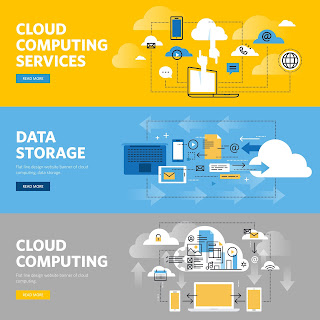Software-as-a-Service or SaaS describes any cloud service that benefits
consumers in accessing software applications online. These software
applications are held in the cloud and used for different purposes by business
enterprises as well as individuals. The service provider manages the remote
infrastructure on which the application runs. The internet consumers can easily
avail these services from Google, Twitter, Facebook, and Flickr.
SaaS is a popular and acclaimed segment of the cloud computing
marketplace; fundamentally because it entertains maximum visitors. Many people
would have had a direct experience with the application based on clouds such as
Office 365, Salesforce, Box, and Google Apps, but only a few would have
developed applications using PaaS (Platform-as-a-Service) or turned up
datacenters worth of VMs using IaaS (Infrastructure-as-a-Service). No wonder,
then in its 2015 Cloud Computing Hype Cycle, SaaS was placed well en route for
the 'Plateau of Productivity' by Gartner.
According to Gartner, Software as a Service (SaaS) is "software
that is owned, delivered and managed remotely by one or more providers. The
provider delivers software based on one set of common code and data definitions
that is consumed in a one-to-many model by all contracted customers at any time
on a pay-for-use basis or as a subscription based on use metrics.”
With the on-going development, Software-as-a-service (SaaS) is branching
out and becoming progressively and extensively adopted by several
organizations.
How Can Saas As A Part Of Your Business Strategy Be Fruitful To Your Organization?
According to Gartner analysis, SaaS is ruling and will continue to rule
the cloud marketplace. Also, based on the evaluation, cloud is predicted to hit
$244 billion in 2017. “SaaS delivery will significantly outpace traditional
software product delivery, growing nearly five times faster than the
traditional software market,” according to IDC.
Listed are four great benefits of the SaaS model:
- Lower Prices – SaaS is customarily sold on a subscription basis that comprises of upgrades, maintenance and consumer support. These subscriptions are monthly, and hence no large up-front costs are required.
- Scalability and Integration – All SaaS solutions are inherited in cloud environments, which have integration and are scalable with various other SaaS offerings.
- Higher Security Levels – The suppliers of SaaS have their servers distributed in many geographic sites, and have automatic backups, guaranteeing a higher level of security.
- Reduced time to benefit – Unlike the traditional models, the software application in SaaS is already installed and configured. The user is quickly able to provision the server for cloud, and the application is ready for use in less time.
In the present, more and more industries around the world are moving up
to the cloud, simply because they can directly hire services and enjoy a
stress-free digital life. The SaaS applications are proving to be high-end
digital IT solutions. With SaaS model, growth is not a goal, it is an
obsession.
Remote Infrastructure Management
If you require notable changes and development to take place in your
organization, then you must enable SaaS and boost operational efficiency with remote IT infrastructure management
services. IT infrastructure is the heart of every company. It
supports its business growth and development. Today, the greatest challenge is
creating the IT infrastructure and ensuring that services are steadily
available, scalable, dependable and manageable. Remote infrastructure
support for your business will help in facilitating the active growth of your
company by using an arrangement of services for a 24x7 uptime and end-to-end
service monitoring.
According to a survey conducted by McKinsey & Company, more than 140
CIOs have suggested that with maturity in customer environments and gain in
control over the processes, they will adopt remote infrastructure management in
their business model. Remote IT infrastructure management services should be
the core of any IT infrastructure strategy.
At TSPLLC, we make sure that all your remote IT infrastructure
management services are appropriately designed, managed and functioned. With
our remote infrastructure services, our aim is to provide you with a vastly accessible
and secure environment for all your business processes. Get in touch.





